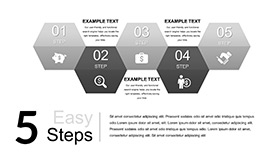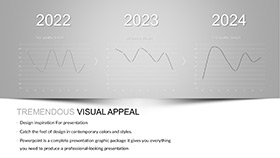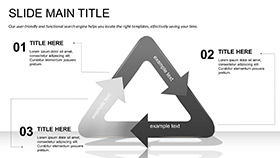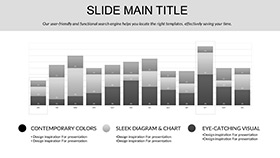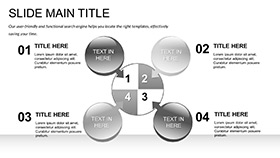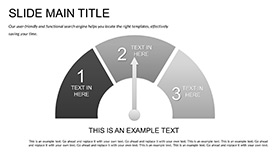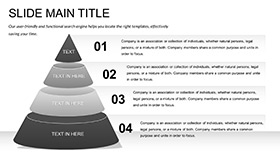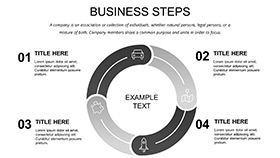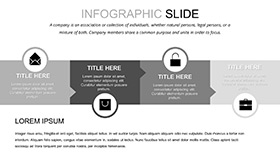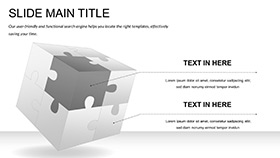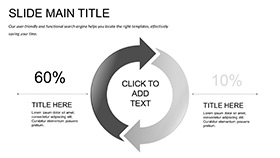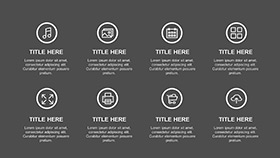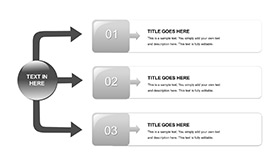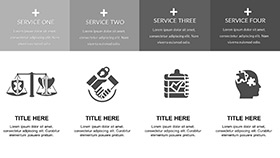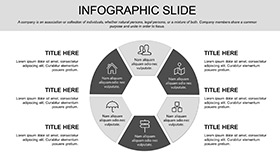Ever wondered how a fleeting thought sparks a cascade of signals across your brain, shaping everything from a quick decision to a lifelong habit? The Nervous System Anatomy and Physiology PowerPoint Template brings that wonder to life, offering a gateway for psychologists, educators, and social workers to unpack the brain's wiring in presentations that stick. This collection of 28 diagrams, backed by three master slides and backgrounds, dives into the architecture of neurons, synapses, and circuits, all editable in PowerPoint 2016 or newer. It's not just slides - it's a tool to demystify how the nervous system orchestrates behavior, learning, and emotional responses, making complex topics accessible for classroom discussions or therapy sessions.
What sets this template apart is its focus on both structure and function, blending anatomical illustrations with process flows that trace impulses from sensory input to motor output. Customize colors across seven schemes to match your lecture theme - perhaps cool blues for central nervous system overviews or vibrant oranges for autonomic responses. The vector graphics ensure sharp details whether you're projecting in a lecture hall or sharing via Zoom, letting you zoom into dendrite branches without losing clarity.
Essential Features Tailored for Mind Explorers
Built for those unraveling the psyche's threads, the features here prioritize clarity and depth. Synapse diagrams, for instance, layer pre- and post-synaptic elements, allowing you to highlight neurotransmitter releases with simple drags. Or use the brain region maps to section off lobes, adding labels for functions like memory consolidation in the hippocampus.
- Detailed Illustrations: 28 diagrams spanning peripheral nerves to glial cell supports, with placeholders for adding real-world examples like reflex arcs.
- Flexible Editing: Fonts and layouts adapt effortlessly, supporting multilingual annotations for diverse audiences.
- Visual Hierarchy: Built-in animations reveal pathways step-by-step, turning static images into dynamic journeys.
A favorite among users is the comparative slide, juxtaposing human neural nets against simpler organisms, perfect for evolutionary biology tie-ins.
Applying Insights: From Lecture Halls to Counseling Rooms
This template transforms theoretical knowledge into practical tools. In educational settings, educators sequence slides to follow the signal's path - from receptor to effector - using flowcharts that mirror textbook diagrams but with room for student polls. Social workers might adapt emotion regulation slides, mapping amygdala responses to coping strategies, fostering empathy in group therapies.
Crafting Compelling Educational Narratives
For a neuroscience intro course, start with an overview of the central versus peripheral divide, then drill into spinal cord cross-sections. Customize a neuron firing diagram to simulate action potentials, adding timelines for ion channel openings. It's a far cry from vanilla PowerPoint sketches, offering precision that rivals medical software.
- Choose a background evoking neural networks - subtle grid lines for connectivity vibes.
- Insert comparative data tables, contrasting vertebrate and invertebrate systems.
- Layer interactive elements, like hyperlinks to video clips of neural scans.
- Conclude with application slides, linking disorders like Parkinson's to affected pathways.
Think of how professors illustrate learning curves: A plasticity diagram evolves with added connections, visually reinforcing neuroplasticity concepts.
Enhancing Professional Discussions on Behavior
In clinical contexts, use the mental process flowcharts to connect thoughts to physiological shifts, aiding in explanations of anxiety triggers. The template's modularity lets you remix for case studies, overlaying patient histories on generic brain maps without redesigning from zero.
Compared to generic templates, this one's themed icons - neurons, axons, vesicles - add authenticity, making your deck feel like a specialized textbook excerpt.
Workflow Wisdom: Tips for Seamless Integration
To amplify impact, pair diagrams with PowerPoint's morph transitions for fluid signal propagations. For group work, export sections as images for handouts, ensuring key terms like "myelin sheath" stay prominent. And in hybrid sessions, the high-contrast options keep details visible on varied devices.
Secure this Nervous System template for $22 and ignite curiosity in every slide - your audience will thank you for making the mind's maze so navigable.
Frequently Asked Questions
Does this template cover both anatomy and physiology?
Yes, it balances structural diagrams with functional processes like signal transmission.
Are the diagrams suitable for non-experts?
Absolutely, with simplified labels and customizable text for introductory levels.
Can I add my own images?
Yes, placeholders allow easy insertion of scans or photos alongside illustrations.
What software versions does it support?
It's optimized for PowerPoint 2016+, with Google Slides compatibility via import.
Is there support for animations?
Built-in triggers enable step-by-step reveals for pathways and processes.
How do the color schemes work?
Seven options apply globally, ideal for thematic consistency in long decks.











